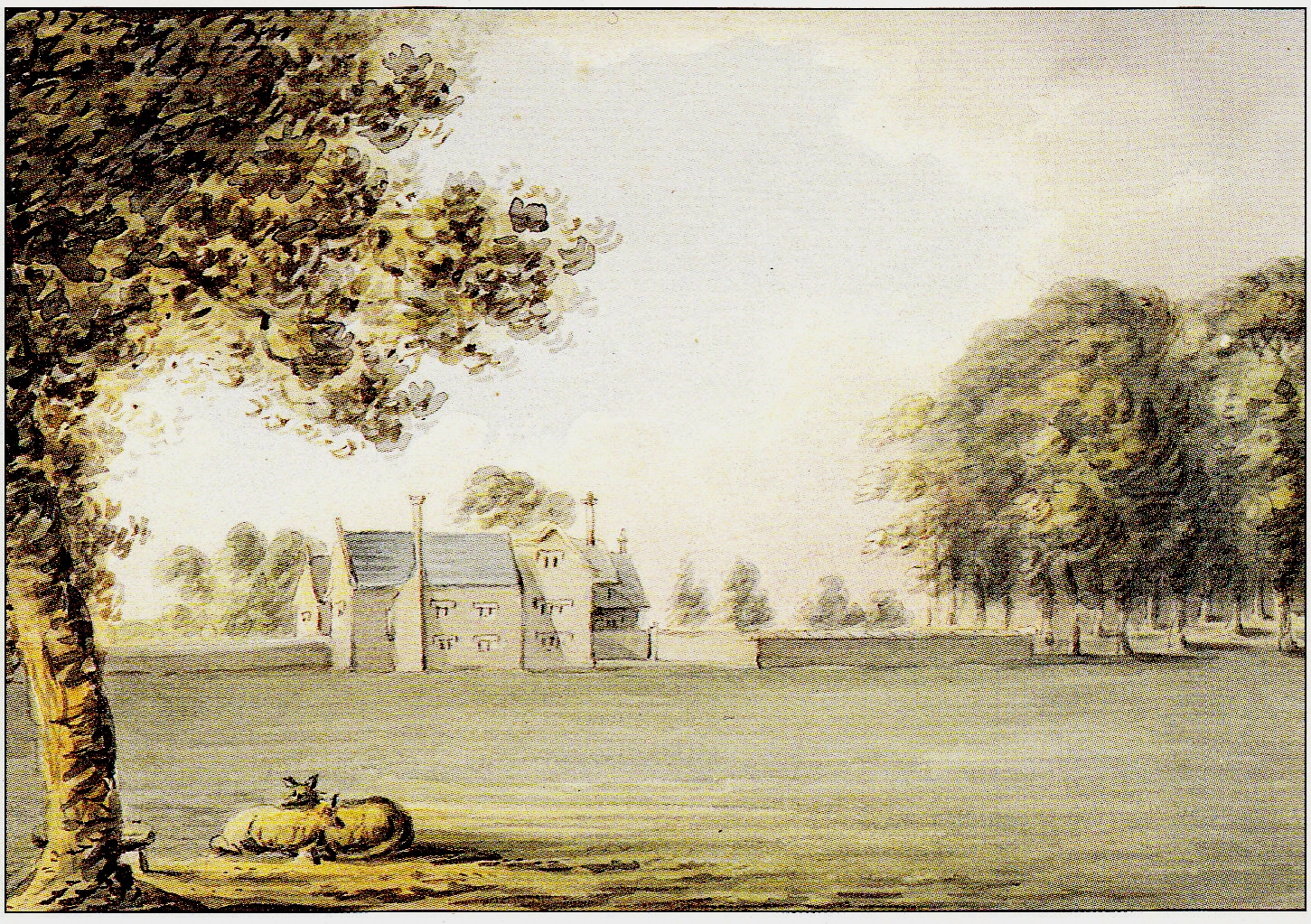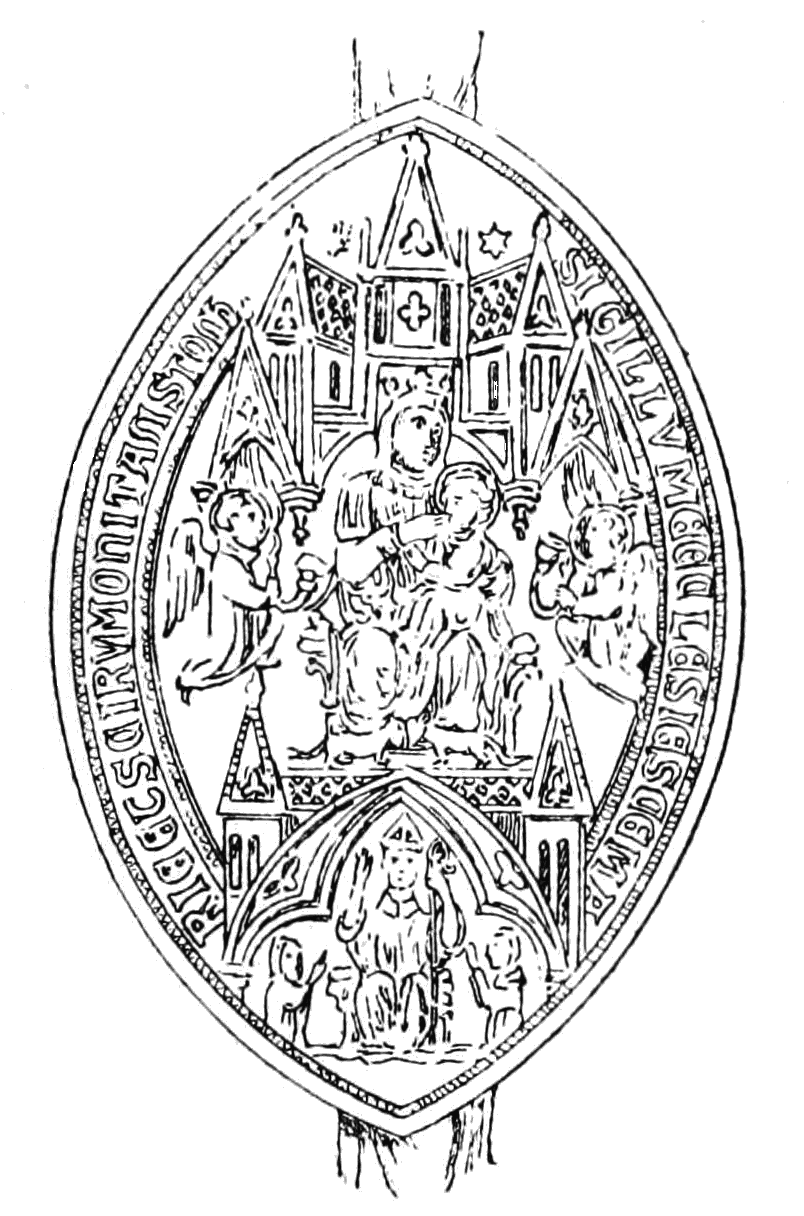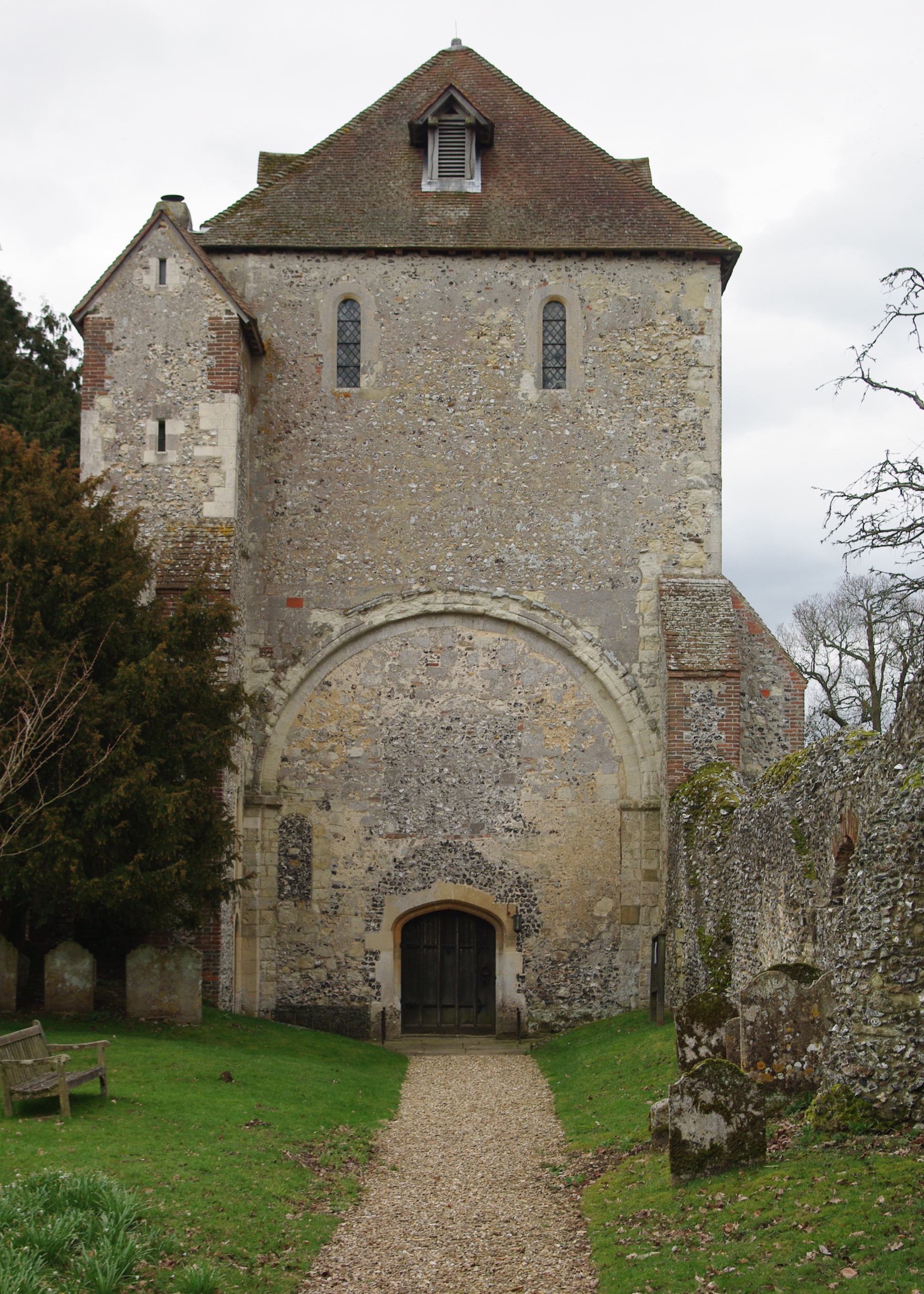|
Cowick, Devon
Cowick is a suburb of the City of Exeter in Devon. Historically it was a manor situated in the parish of St Thomas, Exeter, within the hundred of Wonford.Thorn, Caroline & Frank, Domesday Book, Vol. 9, Devon, Morris, John, (general editor), Chichester, 1985, Part 1 (text), Part 2, (notes) :16,106 (Cowick) It was formerly the site of a Benedictine monastery. History The manor of ''Coic'' is listed in Domesday Book of 1086 as the 106th of the 176 Devon landholdings of Baldwin the Sheriff, otherwise known as Baldwin FitzGilbert and Baldwin de Meulles. He held it in demesne. He was William the Conqueror's Sheriff of Devon and also held lands granted to him personally by that king in Devon which comprised the feudal barony of Okehampton. These included Exwick. Granted to Bec-Hellouin Abbey On Baldwin's death his son and heir William FitzBaldwin made a gift of the manors of Cowick and Exwick, both in the parish of St Thomas, to the Benedictine Abbey of Bec-Hellouin in Normandy. A ... [...More Info...] [...Related Items...] OR: [Wikipedia] [Google] [Baidu] |
Spreyton
Spreyton is a small rural village just north of Dartmoor in Devon, England. Spreyton is famous for its connection to the tale of “Old Uncle Tom Cobley and all” who came from, and is thought to be buried in Spreyton. Some believe that if Uncle Tom Cobley did exist and did travel to Widecombe fair, he would have travelled from Spreyton. Spreyton was mentioned in the Domesday Book (1086) as ""Spreitone" in the ancient hundred of Wonford Open Domesday Online: Spreyton accessed March 2019. and in 1236 as "Sprotton". The first element of the name is the Anglo-Saxon word from which "spray" is derived, "spray" meaning "twig" or "brushwood". There is a small primary school, Spreyton County Primary School, serving the village and the surrounding area. The |
Public House
A pub (short for public house) is a kind of drinking establishment which is licensed to serve alcoholic drinks for consumption on the premises. The term ''public house'' first appeared in the United Kingdom in late 17th century, and was used to differentiate private houses from those which were, quite literally, open to the public as "alehouses", "taverns" and "inns". By Georgian times, the term had become common parlance, although taverns, as a distinct establishment, had largely ceased to exist by the beginning of the 19th century. Today, there is no strict definition, but CAMRA states a pub has four characteristics:GLA Economics, Closing time: London's public houses, 2017 # is open to the public without membership or residency # serves draught beer or cider without requiring food be consumed # has at least one indoor area not laid out for meals # allows drinks to be bought at a bar (i.e., not only table service) The history of pubs can be traced to Roman taverns in B ... [...More Info...] [...Related Items...] OR: [Wikipedia] [Google] [Baidu] |
Earl Of Bedford
Earl of Bedford is a title that has been created three times in the Peerage of England and is currently a subsidiary title of the Dukes of Bedford. The first creation came in 1138 in favour of Hugh de Beaumont. He appears to have been degraded from the title three or four years after its creation. The existence of his title altogether has been doubted. It is discussed by R. H. C. Davis on the basis of the chronicle evidence. However, it now appears to be accepted by historians that Hugh did receive the earldom of Bedford in 1138. The second creation came in 1366 in favour of the French nobleman Enguerrand VII, Lord of Coucy. After Richard II came to the throne in 1377, Bedford resigned the title to the Crown. The third creation came in 1550 in favour of John Russell, 1st Baron Russell. For more information on this creation, see Duke of Bedford (1694 creation). Earls of Bedford, first creation (1138) *Hugh de Beaumont, 1st Earl of Bedford (born 1106) Earls of Bedford, second cr ... [...More Info...] [...Related Items...] OR: [Wikipedia] [Google] [Baidu] |
John Russell, 1st Earl Of Bedford
John Russell, 1st Earl of Bedford (c. 1485 – 14 March 1555) was an English royal minister in the Tudor dynasty, Tudor era. He served variously as Lord High Admiral of the United Kingdom, Lord High Admiral and Lord Privy Seal. Among the lands and property he was given by Henry VIII after the Dissolution of the Monasteries, were the Abbey and town of Tavistock, Devon, Tavistock, and the area that is now Covent Garden. Russell is the ancestor of all subsequent Earls and Dukes of Bedford and Earls Russell, including John Russell, 1st Earl Russell, John Russell, Prime Minister of the United Kingdom and philosopher Bertrand Russell. Origins John Russell was born ca. 1485 probably at Berwick-by-Swyre, Dorset, the son of Sir James Russell (d. Nov. 1505) and his first wife Alice Wyse, daughter of Thomas Wyse of Sidenham, near Tavistock, Devon. James's father was possibly Sir William Russell, but more likely his brother John Russell (d. pre-November, 1505) by his wife Alice Froxmere, ... [...More Info...] [...Related Items...] OR: [Wikipedia] [Google] [Baidu] |
Tavistock Abbey
Tavistock Abbey, also known as the Abbey of Saint Mary and Saint Rumon, is a ruined Benedictine abbey in Tavistock, Devon. Nothing remains of the abbey except the refectory, two gateways and a porch. The abbey church, dedicated to Our Lady and St Rumon, was destroyed by Danish raiders in 997 and rebuilt under Lyfing, the second abbot. The church was further rebuilt in 1285 and the greater part of the abbey between 1457 and 1458. History Foundation Older historians thought the abbey was founded in 961 by Ordgar, Ealdorman of Devon, but the modern consensus is that it was wholly the foundation of his son Ordwulf in 974; in 981 the charter of confirmation was granted by King Æthelred the Unready, Ordwulf's nephew. It was endowed with lands in Devon, Dorset and Cornwall, and became one of the richest abbeys in the west of England. Account by Dugdale William Dugdale's ''Monasticon Anglicanum'' (1718 edition in English) states as follows concerning the foundation: 1193 Papal Bul ... [...More Info...] [...Related Items...] OR: [Wikipedia] [Google] [Baidu] |
Eton College
Eton College () is a public school in Eton, Berkshire, England. It was founded in 1440 by Henry VI under the name ''Kynge's College of Our Ladye of Eton besyde Windesore'',Nevill, p. 3 ff. intended as a sister institution to King's College, Cambridge, making it the 18th-oldest Headmasters' and Headmistresses' Conference (HMC) school. Eton is particularly well-known for its history, wealth, and notable alumni, called Old Etonians. Eton is one of only three public schools, along with Harrow (1572) and Radley (1847), to have retained the boys-only, boarding-only tradition, which means that its boys live at the school seven days a week. The remainder (such as Rugby in 1976, Charterhouse in 1971, Westminster in 1973, and Shrewsbury in 2015) have since become co-educational or, in the case of Winchester, as of 2021 are undergoing the transition to that status. Eton has educated prime ministers, world leaders, Nobel laureates, Academy Award and BAFTA award-winning actors, and ge ... [...More Info...] [...Related Items...] OR: [Wikipedia] [Google] [Baidu] |
Henry VI Of England
Henry VI (6 December 1421 – 21 May 1471) was King of England and Lord of Ireland from 1422 to 1461 and again from 1470 to 1471, and disputed King of France from 1422 to 1453. The only child of Henry V, he succeeded to the English throne at the age of nine months upon his father's death, and succeeded to the French throne on the death of his maternal grandfather, Charles VI, shortly afterwards. Henry inherited the long-running Hundred Years' War (1337–1453), in which his uncle Charles VII contested his claim to the French throne. He is the only English monarch to have been also crowned King of France, in 1431. His early reign, when several people were ruling for him, saw the pinnacle of English power in France, but subsequent military, diplomatic, and economic problems had seriously endangered the English cause by the time Henry was declared fit to rule in 1437. He found his realm in a difficult position, faced with setbacks in France and divisions among the nobil ... [...More Info...] [...Related Items...] OR: [Wikipedia] [Google] [Baidu] |
Alien Priory
Alien priories were religious establishments in England, such as monasteries and convents, which were under the control of another religious house outside England. Usually the mother-house was in France.Coredon ''Dictionary of Medieval Terms'' p. 10 History Alien Priories were small dependencies of foreign religious houses. Specifically, this pertained to the English possessions of French religious houses. The precedent went back at least as far as 912. Ælfthryth, daughter of Alfred the Great married Baldwin II, Count of Flanders. She received various properties under her father's will, and gave Lewisham Priory with its dependencies, Greenwich and Woolwich, to the abbey of St Peter at Ghent. Edward the Confessor gave the parish church at Deerhurst, and its lands to the monastery of St Denis. The practice increased after the Norman Conquest. A number of Norman lords had founded monasteries on their lands in France, which in many cases sent monks to England to manage their ... [...More Info...] [...Related Items...] OR: [Wikipedia] [Google] [Baidu] |
Henry V Of England
Henry V (16 September 1386 – 31 August 1422), also called Henry of Monmouth, was King of England and Lord of Ireland from 1413 until his death in 1422. Despite his relatively short reign, Henry's outstanding military successes in the Hundred Years' War against France made England one of the strongest military powers in Europe. Immortalised in Shakespeare's "Henriad" plays, Henry is known and celebrated as one of the greatest warrior-kings of medieval England. During the reign of his father Henry IV, Henry gained military experience fighting the Welsh during the revolt of Owain Glyndŵr and against the powerful aristocratic Percy family of Northumberland at the Battle of Shrewsbury. Henry acquired an increased role in England's government due to the king's declining health, but disagreements between father and son led to political conflict between the two. After his father's death in 1413, Henry assumed control of the country and asserted the pending English claim t ... [...More Info...] [...Related Items...] OR: [Wikipedia] [Google] [Baidu] |
Hugh De Courtenay
Sir Hugh de Courtenay (1251–1292) was the son and heir of John de Courtenay, feudal baron of Okehampton, Devon, by Isabel de Vere, daughter of Hugh de Vere, 4th Earl of Oxford. His son inherited the earldom of Devon. Early years Sir Hugh de Courtenay, born 25 March 1251, was the son and heir of John de Courtenay of Okehampton, Devon, by Isabel de Vere, daughter of Hugh de Vere, 4th Earl of Oxford, and Hawise de Quincy. John's father, Robert de Courtenay (d. 26 July 1242), son of Renaud II de Courtenay (d. 1190) by Hawise de Curcy (d. 1219), heiress of the feudal barony of Okehampton, married Mary de Redvers (sometimes called 'de Vernon'), daughter of William de Redvers, 5th Earl of Devon (d. 1217). Renaud II was son of Renaud de Courtenay. In order to avoid military service Courtenay paid a fine on 12 December 1276. He was called to arms on the emergency against the Welsh princes, fighting in the 1282 campaign. He attended upon the King at Shrewsbury on 28 June 1283. In 1284 ... [...More Info...] [...Related Items...] OR: [Wikipedia] [Google] [Baidu] |







.jpg)